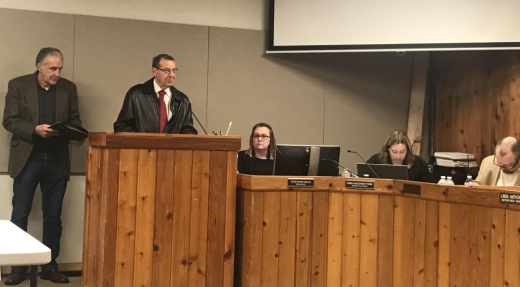After months of committee meetings, Virgil Flathouse, the chair of the bond advisory council, presented West Lake Hills officials with a final bond report and recommendations during a Jan. 22 City Council meeting.
Mayor Linda Anthony thanked Flathouse along with the other advisory members for their work over the past couple of months, saying: “I hope we can call on you as we go through this process, to help be ambassadors for this bond."
The bond, which could appear on the May 2 ballot, encompasses two sections including a number of road and drainage repairs as well as the plan for a new City Hall and police building.
After a long evaluation, the engineering firm K. Kriese and Associates compiled a list of the city’s most critical infrastructure needs, designating $8.71 million toward road and drainage projects and $10.7 million toward a municipal building.
The tentative list includes pavement and drainage repairs on Redbud Trail, Westlake Drive, Laurel Valley Road and Yaupon Valley Road and a drainage project on Camp Craft Road.
The projects were chosen based on a 2017 citywide drainage study that identified the top areas of concern due to the risk to public safety, damage to infrastructure and frequency of maintenance.
West Lake Hills also conducted two architectural studies on its municipal building, noting that both the police building and City Hall were in a state of disrepair.
Renderings of the proposed building, which will be located at City Hall’s current 911 Westlake Drive address, were presented to council Aug. 16 by architecture firm Brinkley Sargent Wiginton. The combined City Hall and police building will feature an outdoor patio area for both city staff and residents.
Municipal building
Advisory council member Gordon Bowman provided the board with suggestions regarding the building portion on the bond. The advisory council agreed with the city’s architects that renovating the existing building is not a viable option.
“It’s reached a certain age where it just needs to be replaced,” Bowman said.
Bowman said this is due to high usage, a lack of accessibility options and the probable presence of asbestos.
The advisory council also suggested the new building should incorporate ground-level safety measures, such as barriers used to prevent traffic accidents. The option of using solar panels was also discussed.
Roadway and drainage
The list of roadway and drainage projects was also evaluated by the advisory council based on a number of factors, including overall cost and risk to public safety. Overall members of the council agreed with the engineering reports.
Member James Vaughan noted that the Laurel Valley drainage project drew the majority of the public’s attention, with some community members feeling that the project is unnecessary.
City Engineer Vicki Ortega noted these drainage projects exist in a drainage ecosystem, meaning a number of these drainage systems are interconnected.
Anthony agreed, saying: “We are dealing with an integrated system, and if you leave one piece out, you’re jeopardizing the other pieces.
The last day for the city to call the May 2 election is set for Feb. 14, with early voting beginning April 20.





